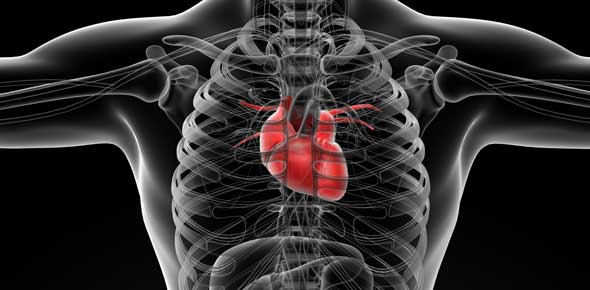Helper T Cells recognize antigens when they are bound to
T cells achieve immunocompetence in
______________ have the thickest tunica media.
Antigen-presenting cells usually display processed antigens to T cells...
Congestive heart failure results in which of the following?
Chemical signals by which immune cells communicate with each other
Basophils of the blood help to get defensive leukocytes to the site...
What is the mean arterial pressure for a person with 110 and 65 mm Hg...
The vasomotor center of the __________________ controls blood vessels...
Myocardial infarction can lead to _______________ shock.
Autoimmune diseases are disorders in which the immune system fails to...
In ___, the lungs are infected with Mycobacterium and...
_____________ are found especially in the mucous membrane, standing...
The velocity of blood flow decreases when
In____, the lungs are infected with Myocobacterium and produce fibrous...
In people who stand for long periods, blood tends to pool in the lower...
____________ would not increase capillary filtration.
All of these increase blood pressure except
____________ are powerful vasoconstrictors, and _______________ also...
A person who is HIV-positive and has a helper T (TH) cells count lower...
One characteristic of the immune response is specificity. This means...
Before B cells secrete antibodies they differentiate into
____ states that the total pressure of a gas mixture is equal to the...
Which of the following enzymes in an RBC breaks H2CO3 down to...
This is the only lymphatic organ with afferent lymphatic vessels.
___________ employ a "respiratory burst" to produce...
Vaccination stimulates
Each immunoglobulin (lg) has __________ antigen-bonding site(s)
The _______________ supplies 80% of the cerebrum.
Each alveolus is surrounded by a basket of blood capillaries supplied...
The blood transports more CO2 in the form of ___ than in any...
The most important force in venous flow is
There are no ________________ in humans.
The most important force driving reabsorption at the venous end of a...
A mean arterial pressure (MAP) below 60 mmHg can cause _____, whereas...
Antibodies do not
___ is a lung disease marked by a reduced number of cilia, reduced...
...
Blood flow to the _______________ remains quite stable even when mean...
These are all tributaries of the inferior vena cava except
Complement C3b protein coats bacteria and stimulates phagocytosis by...
T cells undergo positive selection in the thymus, which means
A bee sting can trigger a massive release of histamine, which causes...
From superior to inferior, the major branches of the abdominal aorta...
The most important force driving filtration at the arterial end of a...
The principal venous drainage of the thoracic organs is accomplished...
The amount of air in excess of tidal volume that can be inhaled with...
The medullary ischemic reflex results in
Which two ligaments extend from the thyroid cartilage to the arytenoid...
In a healthy person, which of the following will have the...
Which of the following has no effect on oxyhemoglobin dissociation
Nitrogen bubbles can form in the blood and other tissues when a scuba...
Complement fixation can lead to any of the following...
The Valsalva maneuver can assist in diagnosing a hernia by
These are a group of proteolytic enzymes secreted by natural killer...
_____________ are the largest of the lymphatic vessels and they empty...
This is the correct sequence of events in the humoral immune respons
The lungs receive a systemic blood supply by way of the
Which of the following does not have cilia?
















